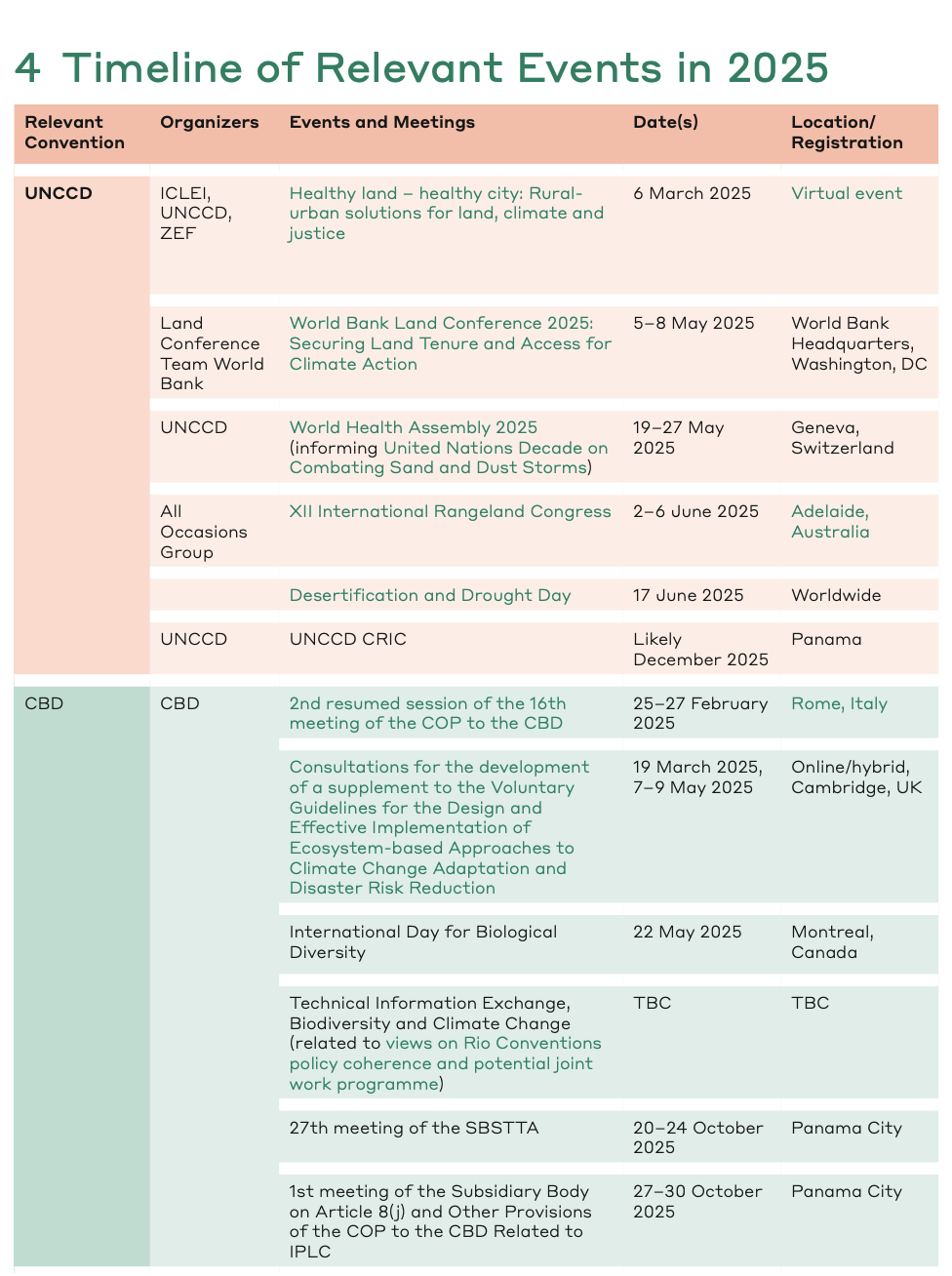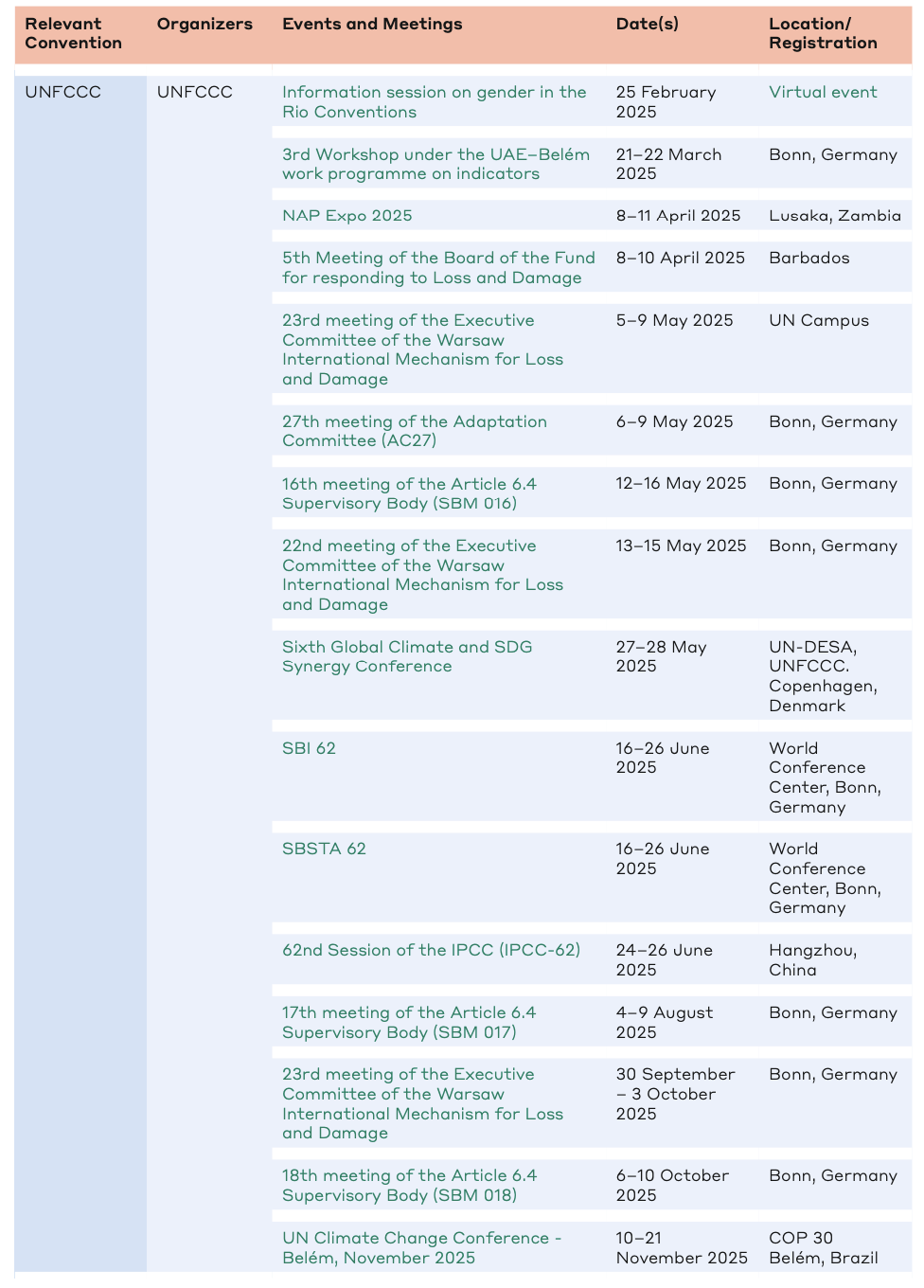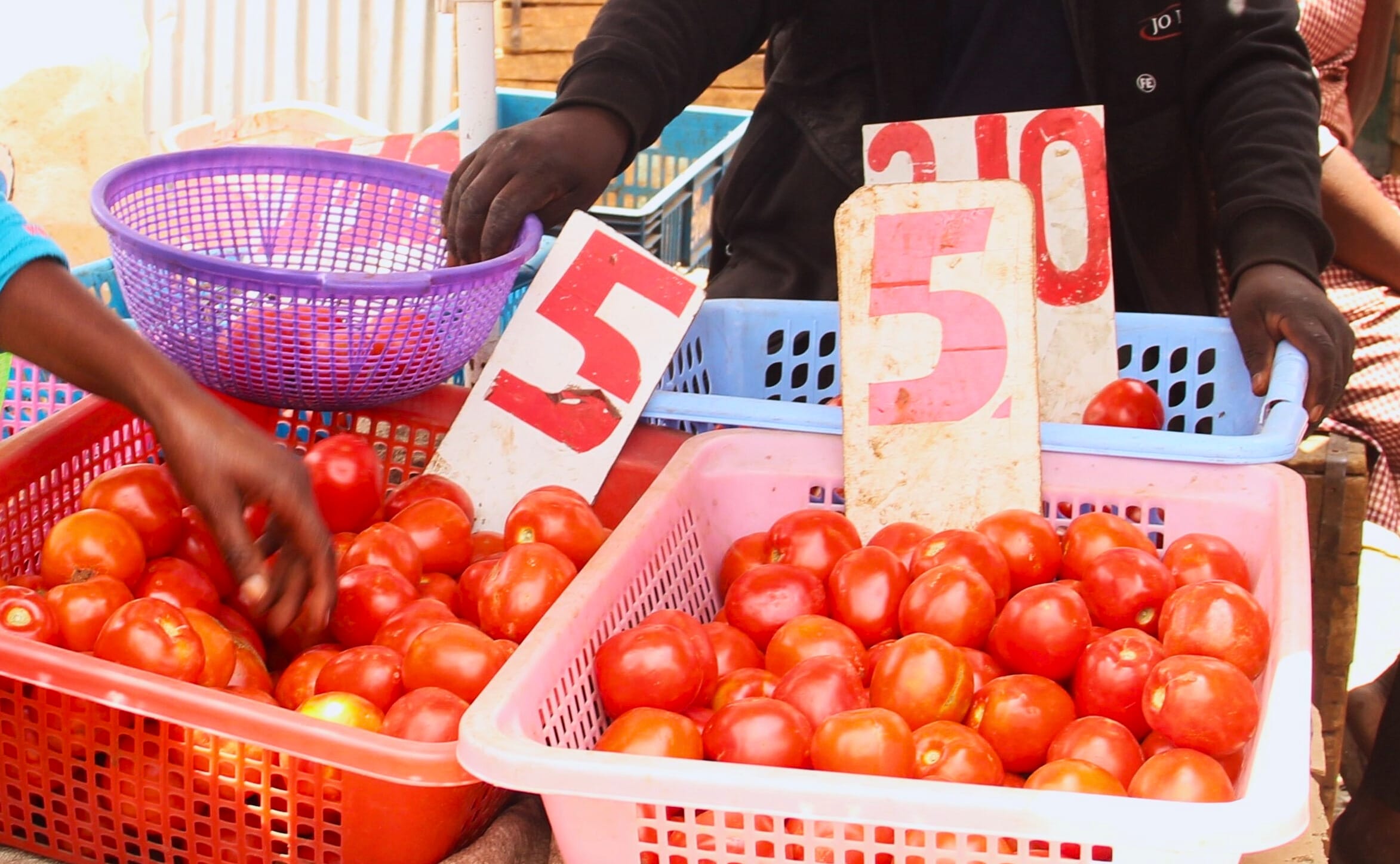Did 2024 - the year of the triple COP - change anything for land rights?
What did this “triple COP” moment really deliver for land rights? Can we keep the momentum up to advance gains made and push for bolder action?
by Frederike Klümper | 2025-06-26

Our Land Governance Team Programme Director, Frederike Klümper, highlights our latest policy brief that provides key entry points to solidly anchor land rights in climate action. She urges us to keep momentum up, as the next 12 to 18 months offer a golden window of opportunity for change.
Looking back, 2024 was billed as a landmark year for global environmental governance. For the first time, the three Rio Conventions–UNFCCC, CBD, and UNCCD–held their COPs in the same calendar year. For those of us working at the intersection of climate, biodiversity, and land rights, it raised an urgent question: could this alignment finally elevate land tenure to the level of priority it deserves?
At the time, there was cautious optimism. Now, in mid-2025, we have the benefit of hindsight to ask: what did this “triple COP” moment really deliver?
Having followed land tenure in the multilateral system for years, I saw this as a rare window of opportunity where meaningful alignment across climate, biodiversity, and land degradation finally seemed possible. There were signs of that potential becoming real: the CBD’s adoption of land tenure indicators and the UNCCD’s move to re-establish land rights as a distinct negotiation topic.
But the overall picture remains fragmented. Land tenure was once again largely absent from the UNFCCC negotiations, despite the rapid expansion of carbon markets and land-based climate strategies. It’s hard not to ask: what will it take for land tenure to be seen not just as a safeguard, but as a strategic foundation?
Land governance is not only about avoiding harm, it’s about enabling just, effective, and lasting environmental outcomes. We now have several opportunities to actively build this foundation through recent Rio Convention decisions and ongoing processes. But to seize them, the land community must recognize and use them more assertively.
Together with Veronica Lo, Gabriela Barragan, and Daniel Montas, TMG Research analyzed the triple COP outcomes from a land rights perspective.
Read “Unlocking Land Tenure: Pathways for policy action after the triple COPs of 2024” here.
To me, this is more than a review, it’s a call to generate momentum and anchor land tenure more firmly within global environmental frameworks. The results are both encouraging and sobering.
From analysis to action: entry points and a timeline for change
What makes this report stand out is that it offers more than critique. It provides clear entry points for advancing land rights, rooted in decisions already taken in 2024. It also outlines a concrete timeline for implementation and follow-up over the next 12–24 months.
Many of these recommendations build on formal outcomes, including:
CBD’s adoption of land tenure indicators in the Global Biodiversity Framework.
UNCCD’s call for a new National Focal Point on Land Tenure.
The evolving mandates for Indigenous Peoples and Local Communities (IPLCs) engagement across conventions.
Yet, a persistent governance gap remains. Land tenure is still treated in silos. Women’s land rights, though increasingly referenced, remain underfunded and under-implemented. IPLCs are being more visibly included—but without secure tenure or free, prior and informed consent, their participation remains symbolic.
Key next steps include:
Supporting national implementation of the CBD’s land tenure indicators via revised biodiversity strategies and reports.
Ensuring that UNFCCC negotiations in 2025 address tenure under Article 6, NDC revisions, and climate finance safeguards.
Backing grassroots tenure mapping and gender-responsive reforms, especially ahead of the next UNCCD review cycle.
Why the Next 12–18 Months Matter


2025 is more than a year of reflection, it’s a window for coordinated action. The momentum created in 2024 risks dissolving into scattered initiatives unless we act now.
A joint pathway on land rights, anchored in instruments, like the Voluntary Guidelines on the Responsible Governance of Tenure, could offer the coherence we need.
Such a joint pathway would:
Embed land rights into national climate and biodiversity strategies.
Link governance across the Rio Conventions.
And ensure that tenure is treated not as an afterthought, but as a pillar of just transition.
Read the policy brief: Unlocking Land Tenure: Pathways for Policy Action after the Triple COPs
Read the full report: Deep Dive – Land Tenure and the 2024 Triple COP Outcomes (TMG Research)
 Urban Food FuturesSep 29, 2025
Urban Food FuturesSep 29, 2025Cheaper Food, Higher Costs: The Paradox of Nairobi’s Food Systems
What are the hidden costs of foods sold in Nairobi's informal markets, and who must bear them? We discuss how the city could build food systems that are both affordable and fair—for consumers and the people who feed them.
Christian Sonntag, Emmanuel Atamba, Lumi Youm
 Urban Food FuturesJun 20, 2025
Urban Food FuturesJun 20, 2025Working with informality: A hidden path to Zero Hunger
Global progress on Zero Hunger is faltering, but a powerful, overlooked solution exists: working with informality. Supporting the networks already feeding cities and sustaining communities can drive progress not only on hunger, but across multiple SDGs.
Jes Weigelt
 Land GovernanceMay 29, 2025
Land GovernanceMay 29, 2025Land rights are a tool for justice in carbon markets
Explore how carbon credit projects threaten people's land rights, as well as concrete policy pathways to reverse this alarming trend to achieve climate justice.
Joanna Trimble

